Behind the Scenes with Antonio de la Rosa
Antonio de la Rosa in his 23-foot Ocean Defender in the harbor at Puerto Williams, Chile.
Read my story about Antonio in BBC Travel
Antonio de la Rosa wanted to be the first person to row alone to Antarctica. When I first heard about his expedition, it sounded like a fictional sequel to Sir Ernest Shackleton’s 1916 voyage. Antonio planned an epic adventure rowing a small boat he named the Ocean Defender from Cape Horn, the very southern tip of South America, to Elephant Island, one of the first islands on the Antarctic peninsula. I wondered if this guy could be for real and went to see for myself.
I spent a week with Antonio and his team in Puerto Williams, on Chile’s Navarino Island as he waited for a window of decent weather to depart from Cape Horn. He needed at least 48 hours of calm winds so he could get far enough from the rocky point to not be smashed on the rocks by the violent Antarctic waves and wind.
Picking us up from the airport
Puerto Williams is so small that Antonio picked us up from the airport in a zodiac and took us across the harbor to the sail boat we’d be staying on for the week.
I was a late addition to Antonio’s team. I had met his photographer, Alfonso d’Ors in Punta Arenas, Chile as I was preparing to go to Puerto Natales to write about Torres del Paine. D’Ors convinced me that writing about Antonio would be much more interesting than Torres del Paine – and he was right.
We flew from Punta Arenas to Puerto Williams and Antonio picked us up in a zodiac at the airport. It was my first time meeting Antonio and I was immediately impressed with his energy and permanent smile. He kept it up the whole week I spent in Puerto Williams. I never saw his energy flag or any hint of anxiety or apprehension about the coming expedition. Considering what he was facing, his relentless optimism was even more impressive than his energy, which reminded me of kids buzzed on sugar at a birthday party.
The first half of the expedition was to row from Cape Horn to Elephant Island, over 506 miles through what the Spanish call Mar de Hoces, but which most English speakers call the Drake Passage. (Side note, Drake never sailed south of Cape Horn and the first ship to sail around Cape Horn was captained by Francisco de Hoces). The second half of the expedition was a sailing adventure from Elephant Island to South Georgia, which is over 800 miles. (South Georgia is still called by its previous name, Isla San Pedro, by the Spanish).
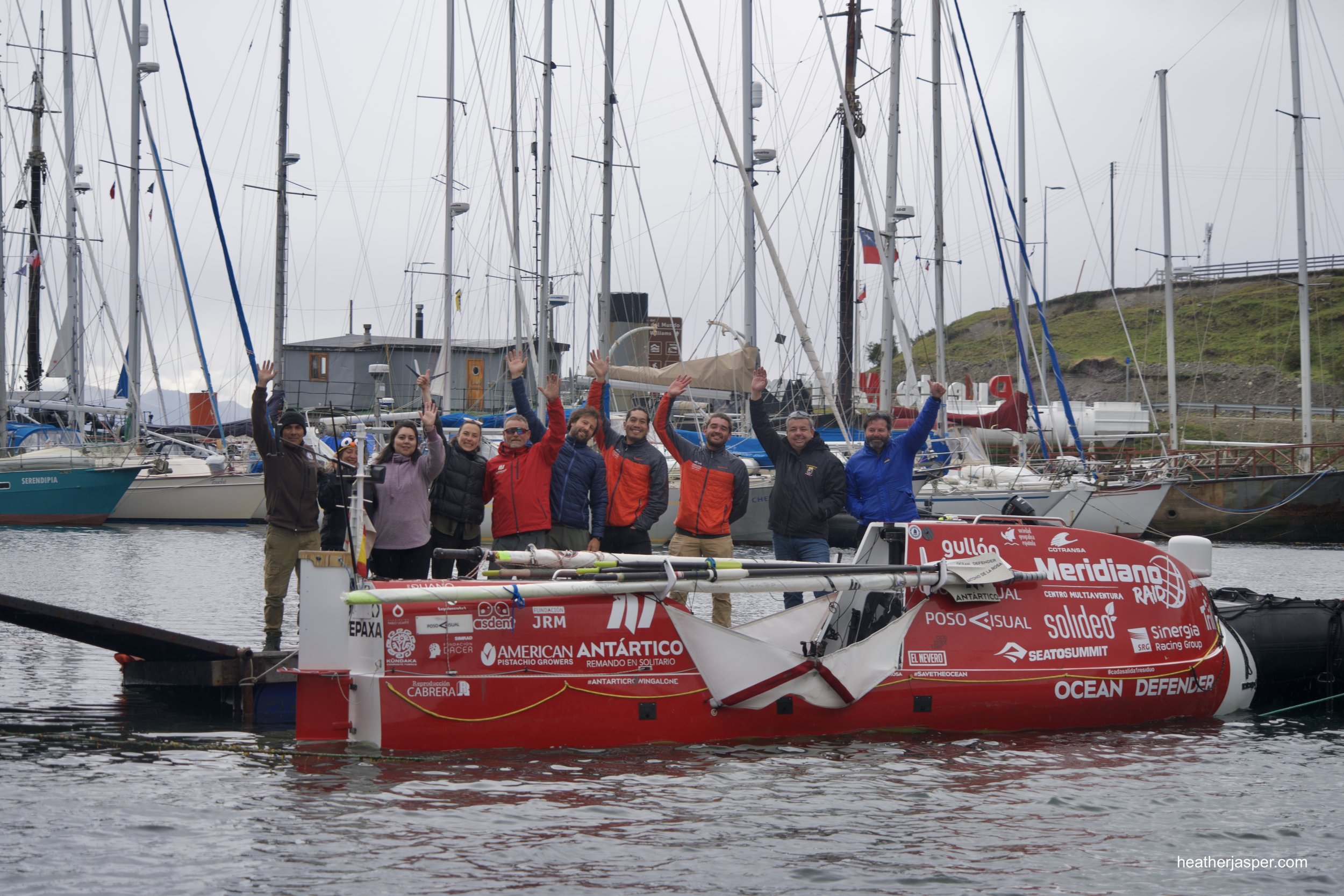


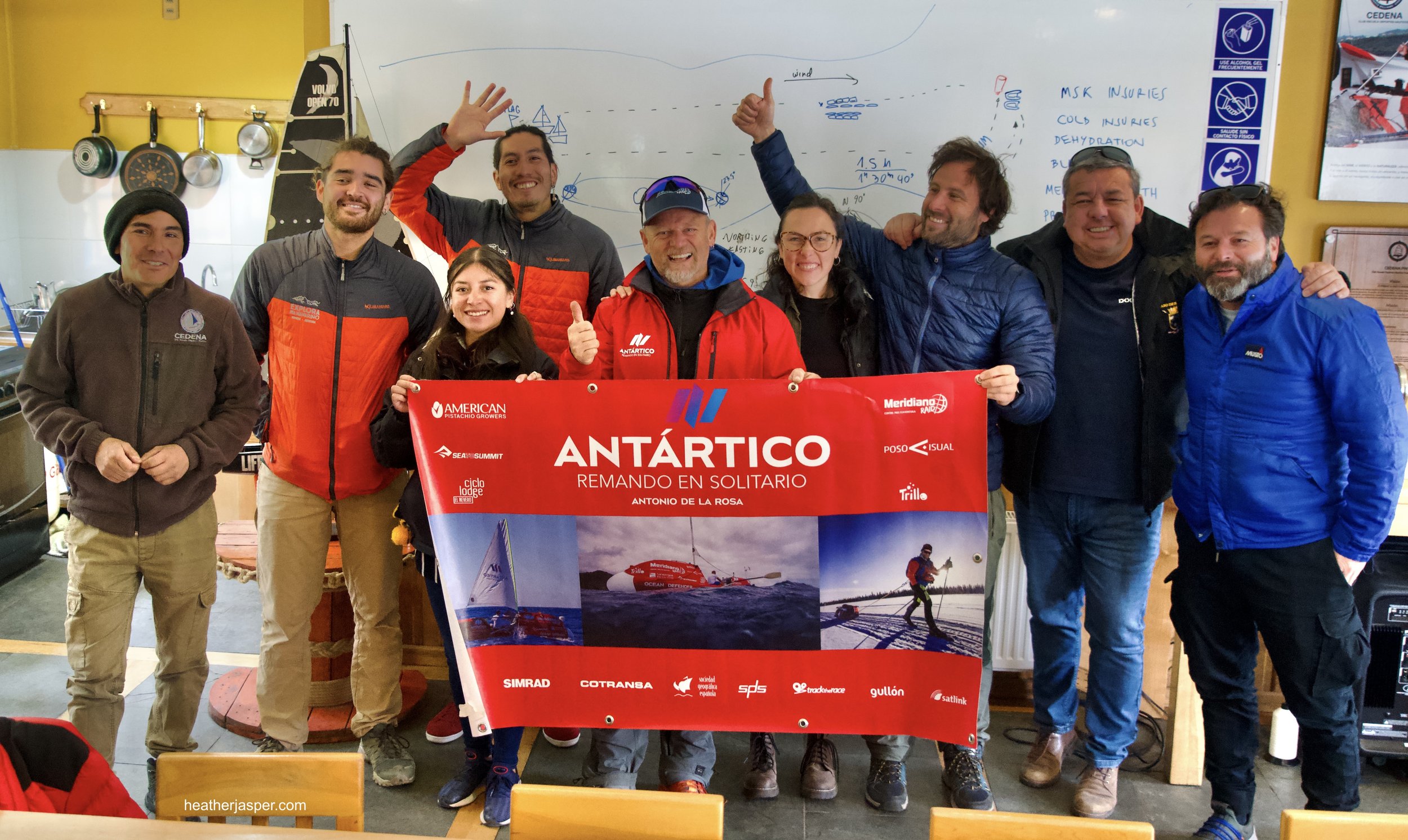

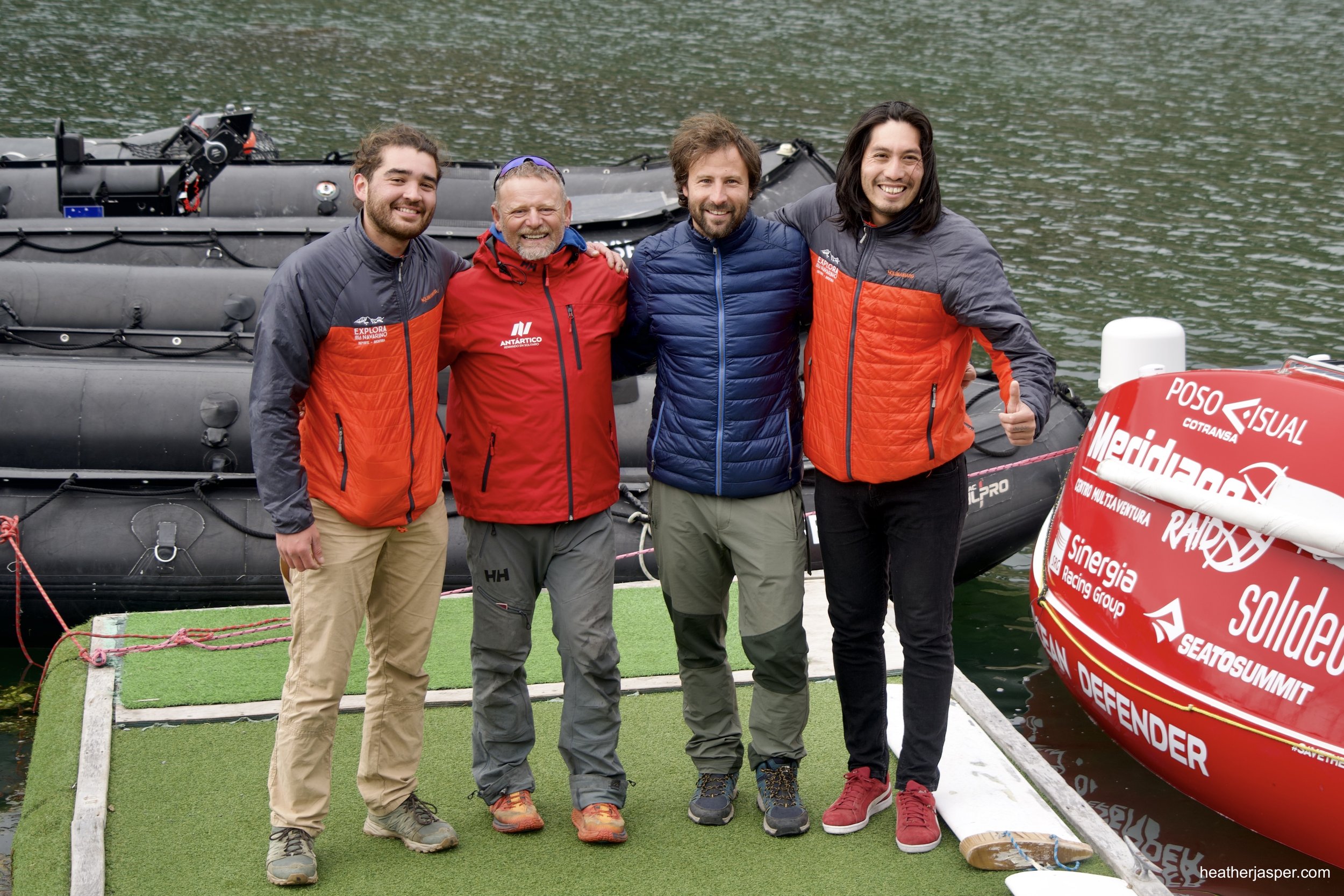

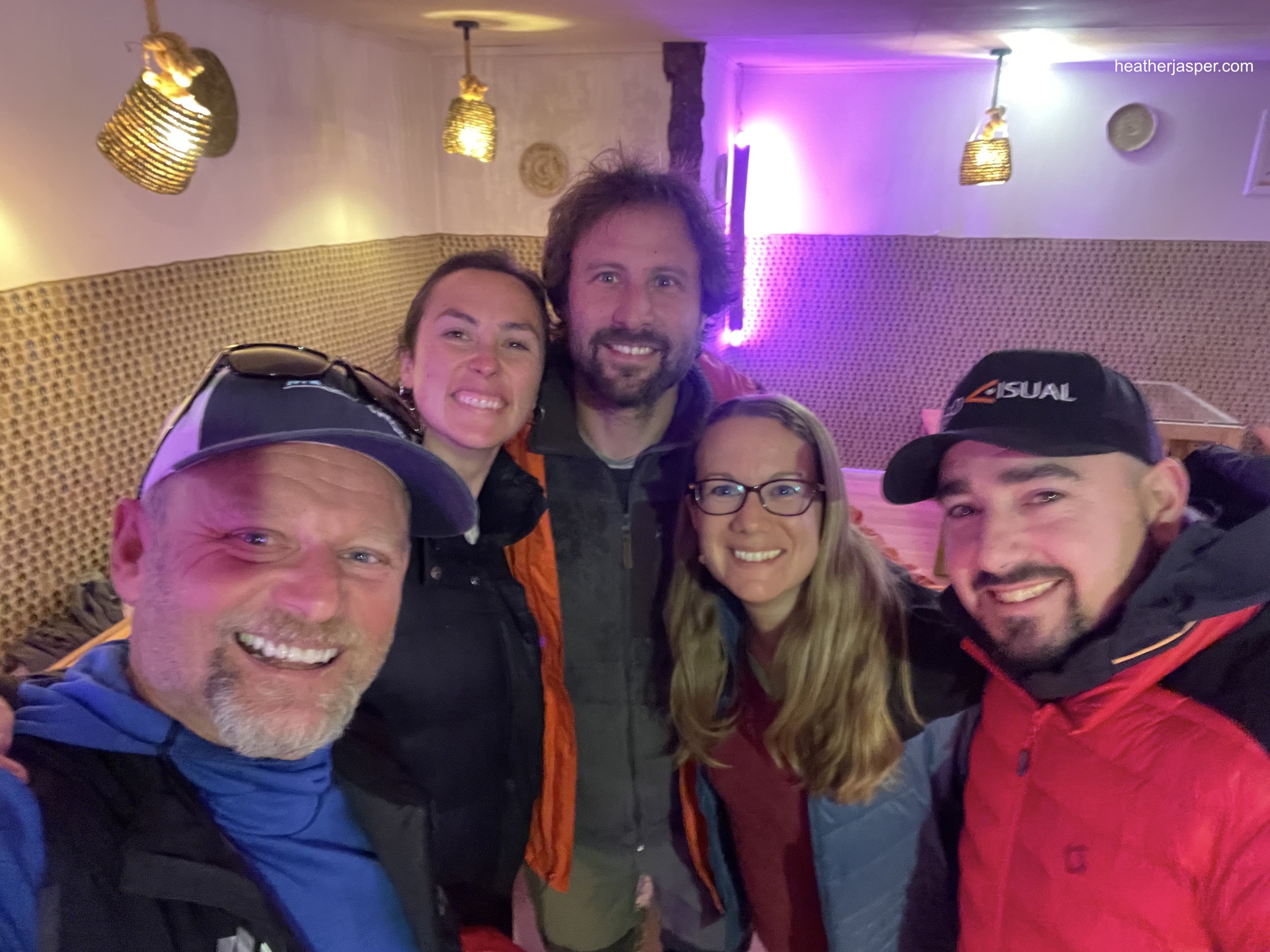
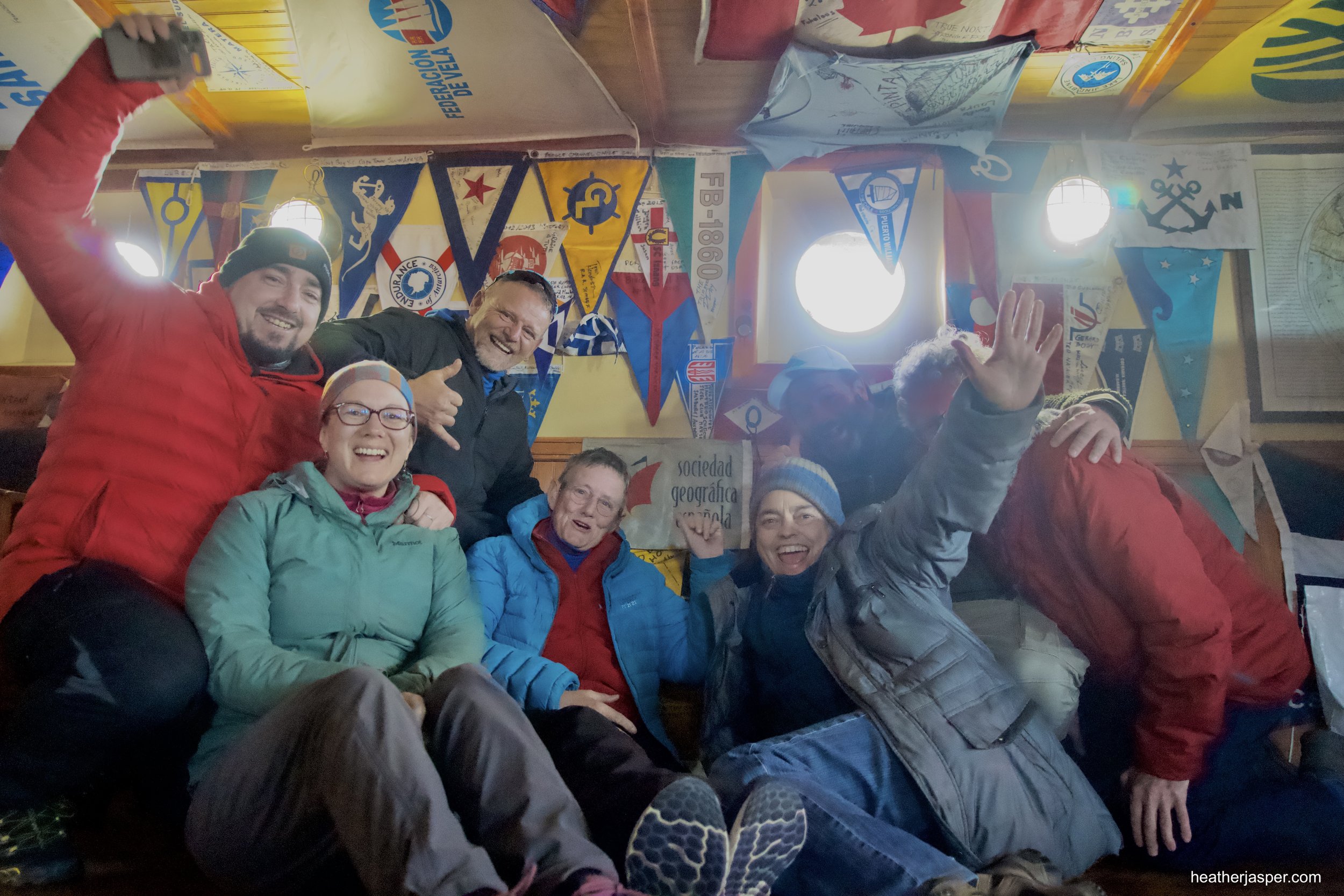
Antonio spent most of his time in Puerto Williams with the friends he made there the previous year, when he was stuck in town for weeks on end. Multiple problems contributed to him being unable to start the expedition as he had planned in December 2021. Initially, he wanted to start even sooner, but the Covid-19 pandemic ruined all those plans. The pandemic even ruined the 2021 plans when one crew member got sick and everybody was trapped on the support boat, the Ypake II in quarantine for weeks. By the time I met him in December 2022, Antonio was so ready to start the expedition that he could barely sit still.
During my week with Antonio, he made appearances around town, had his picture taken at local restaurants, answered questions from a group of university students and sailed through the harbor with kids from the local CEDENA sailing club. He was constantly analyzing the weather forecast, especially the wind.
Alfonso d’Ors has been working on a documentary with Antonio for over four years. This trip to Antarctica was to be the culmination of years of work and the end to the documentary. Follow him on Instagram.
The Ocean Defender’s cabin
There are a lot of impressive things about Antonio’s expedition: the rowing, the distance, the cold, the giant waves, the strong winds, the isolation. Still, one thing that really impressed me was the contortions he has to do to wiggle head first into the cabin and then fold over his legs to get out of the cabin head first. It was not easy for me and he would be doing this in an insulated dry suit with a climbing harness on so he wouldn’t be swept out of the boat by massive Antarctic waves.
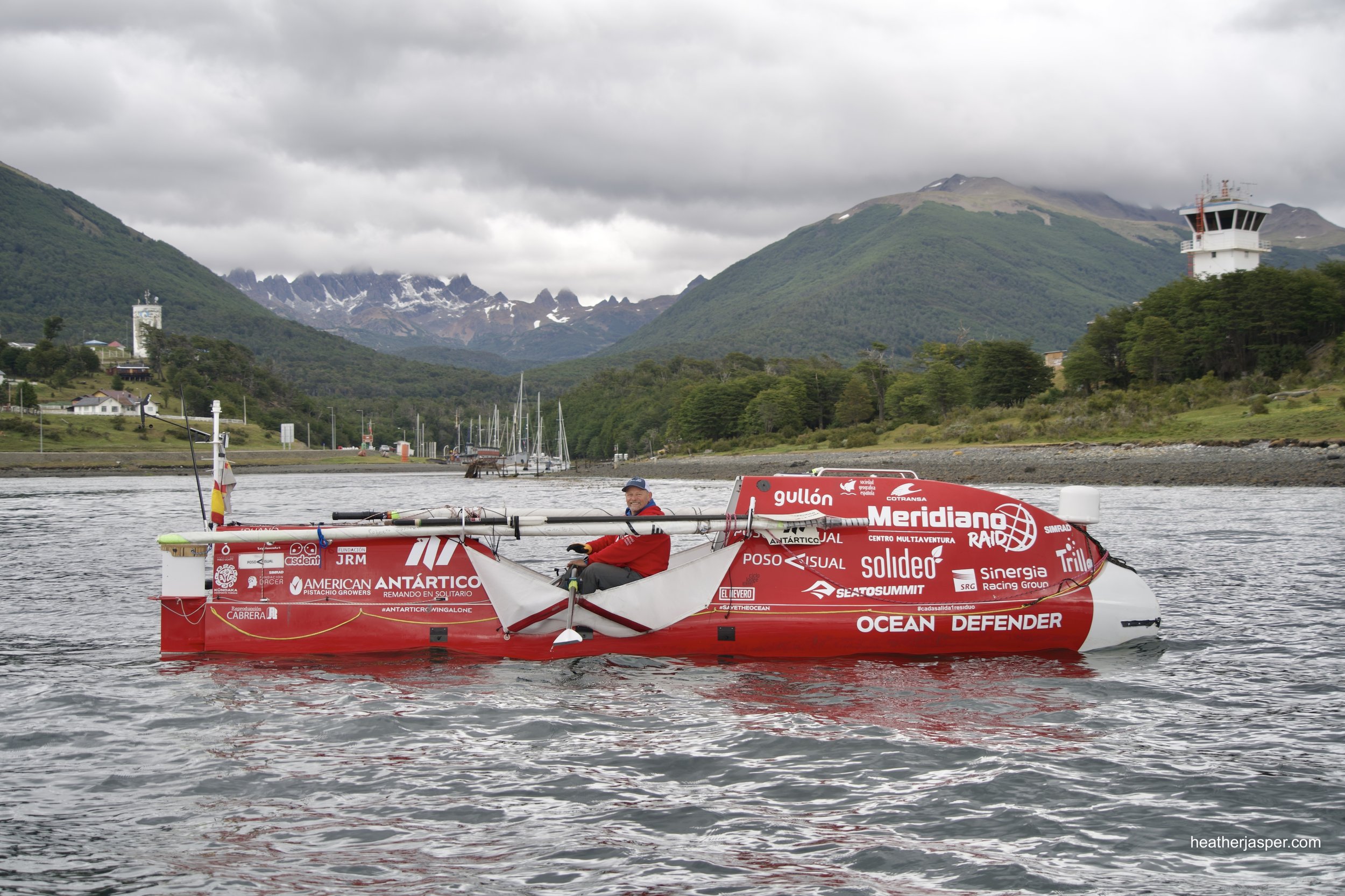
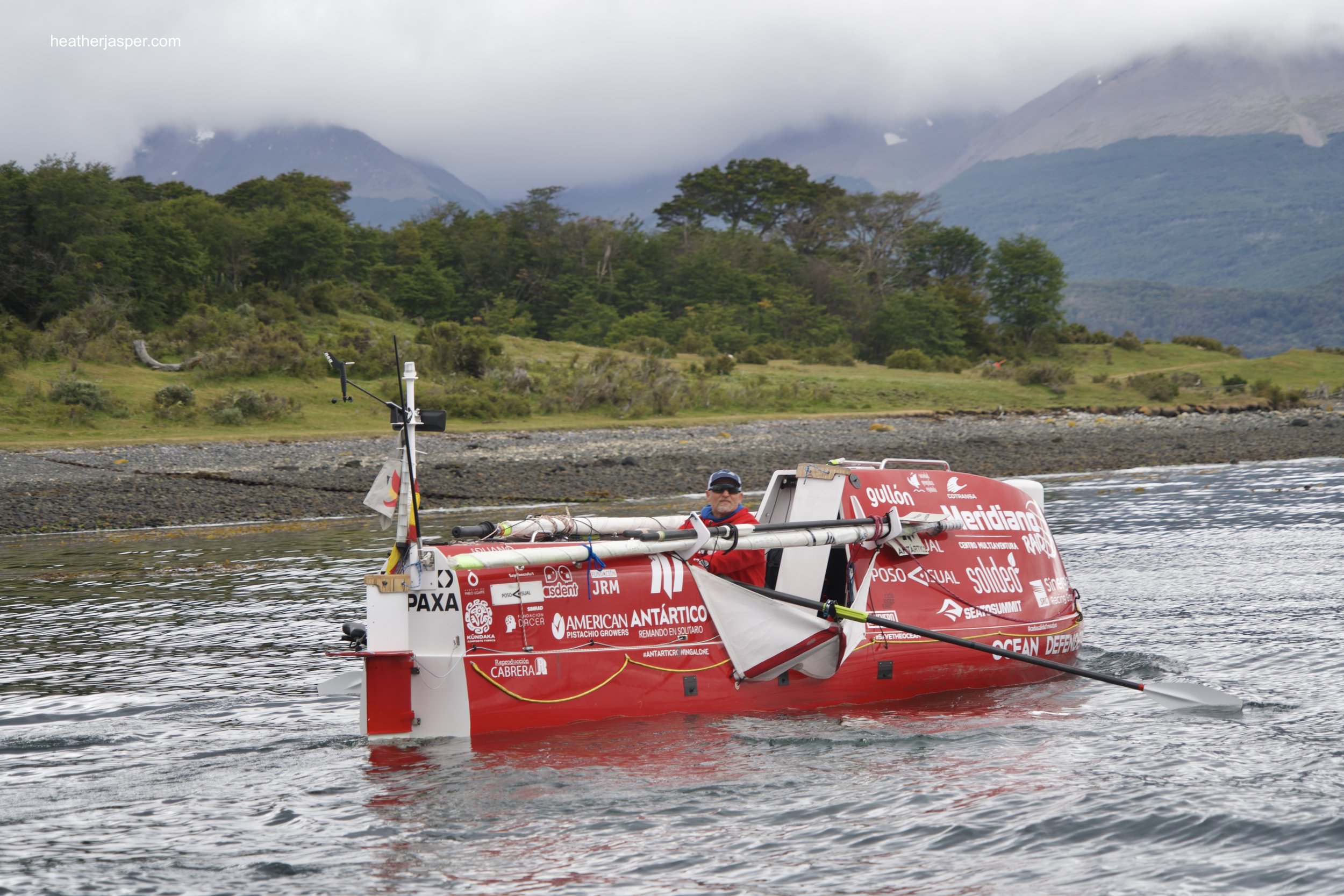
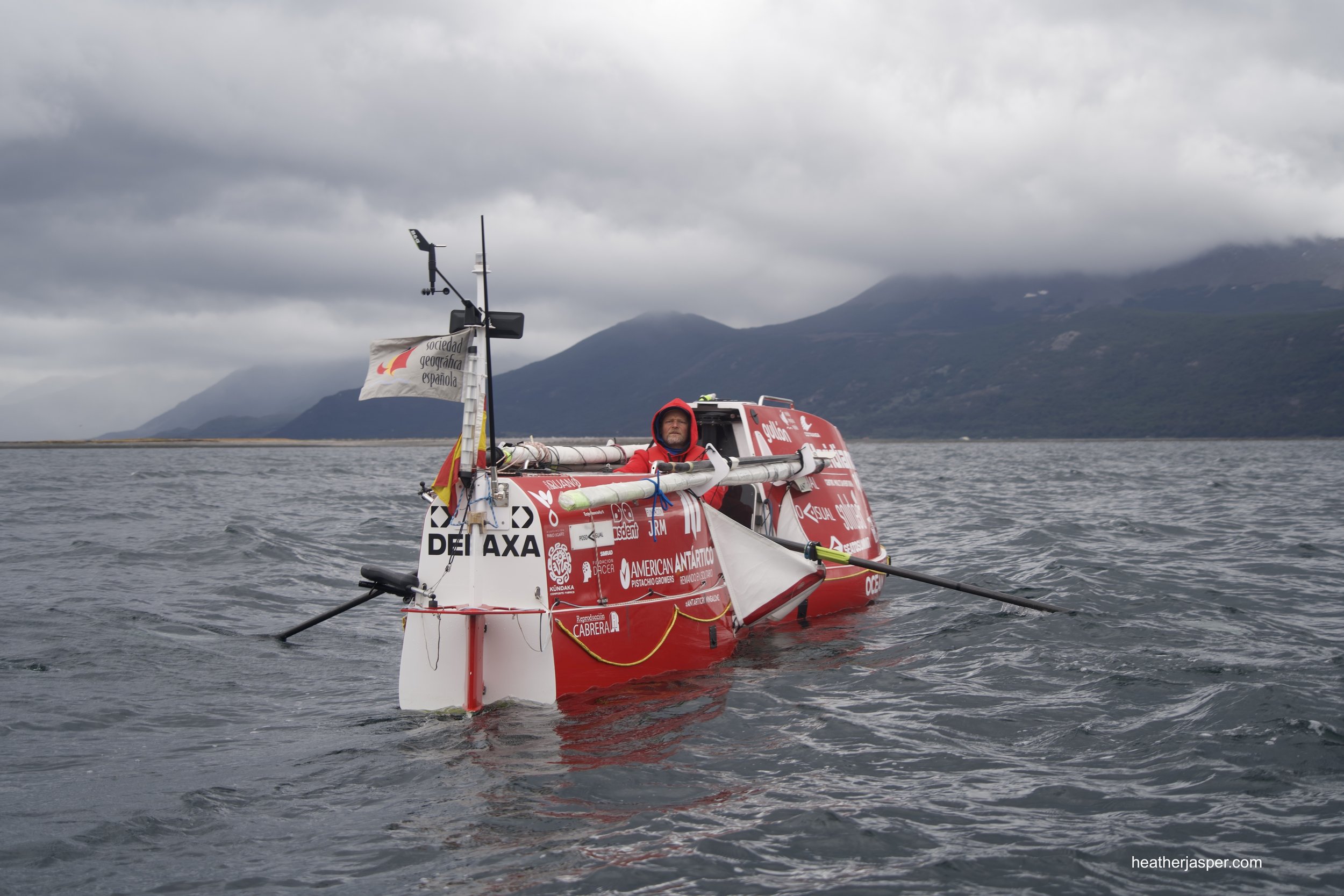
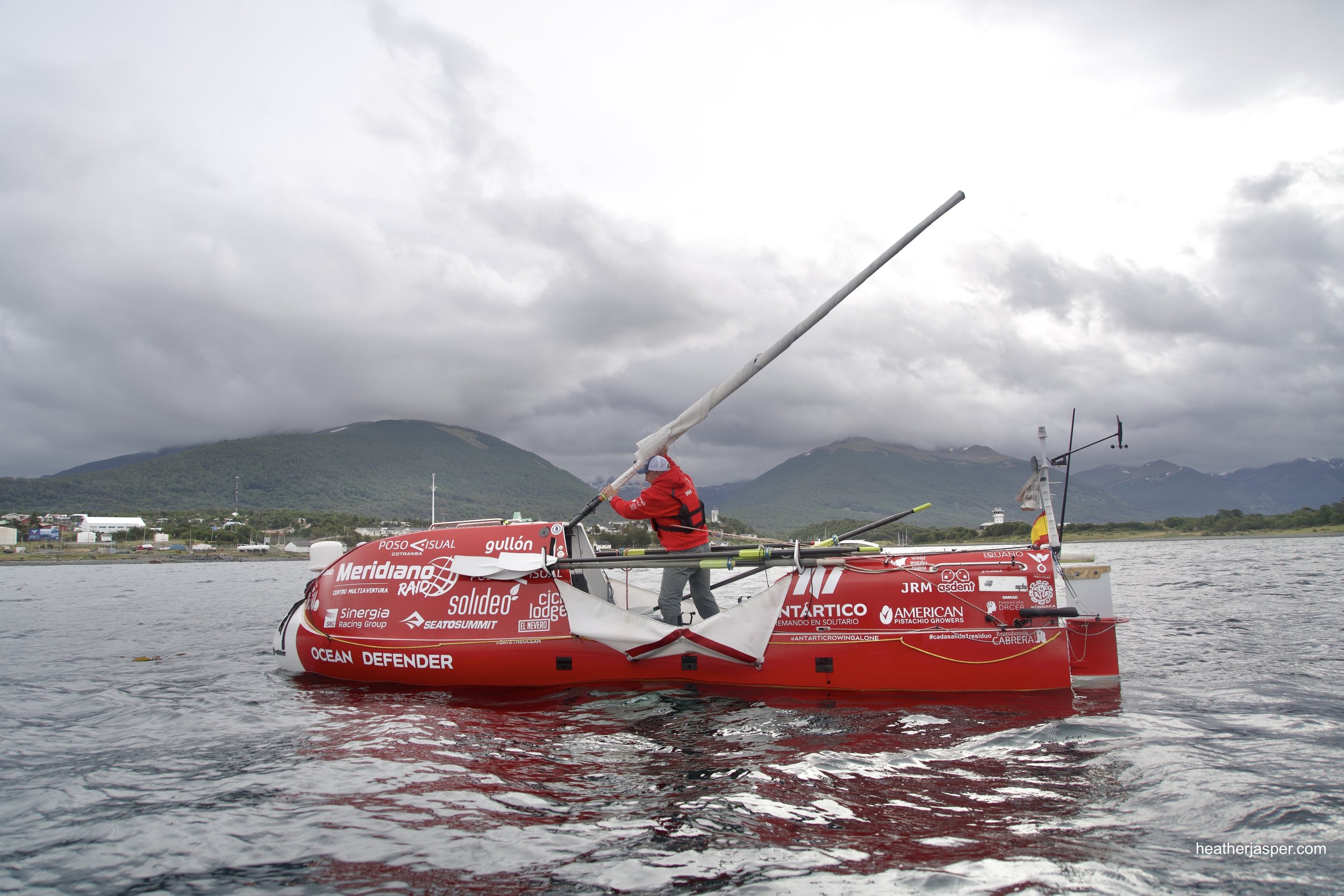
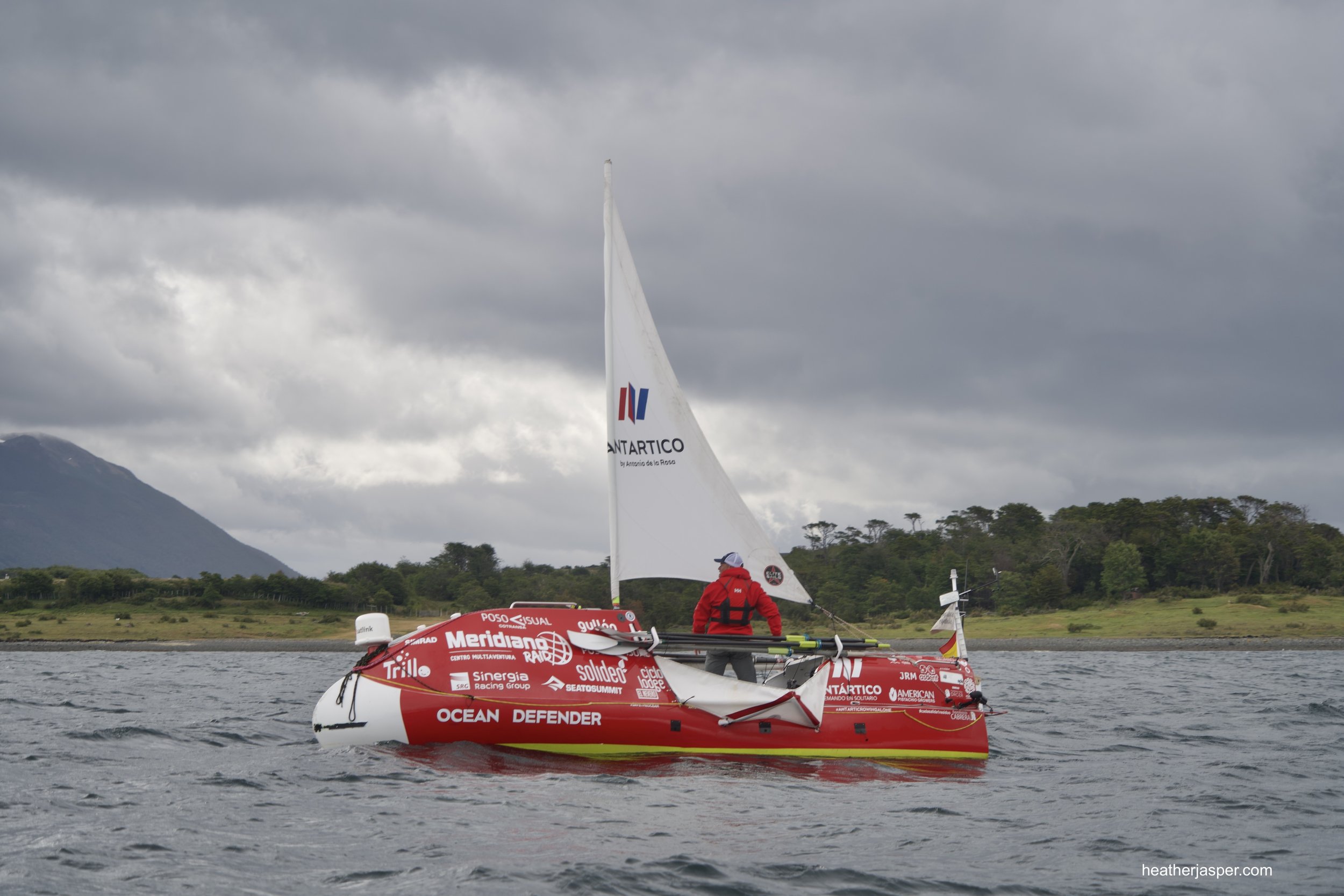
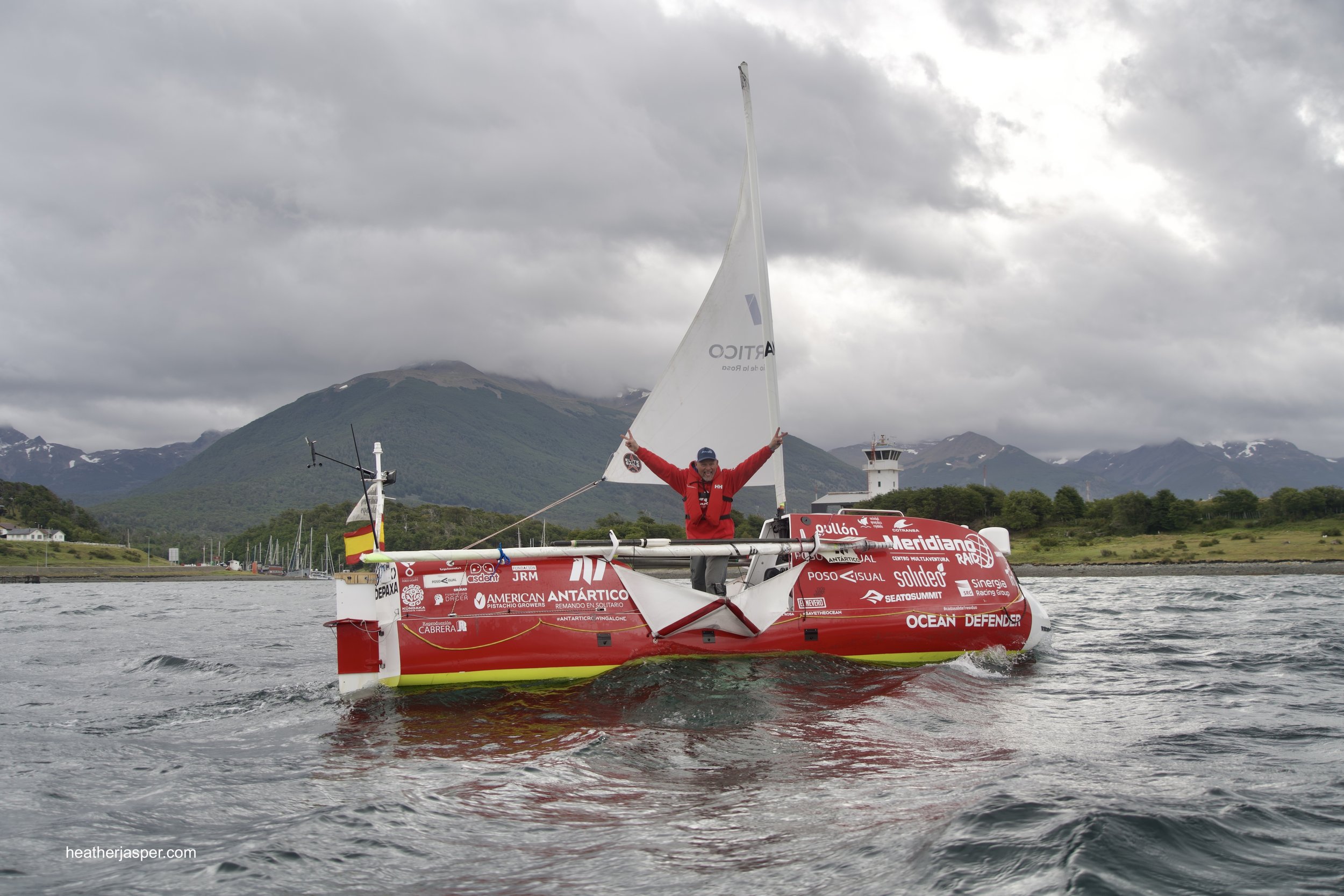
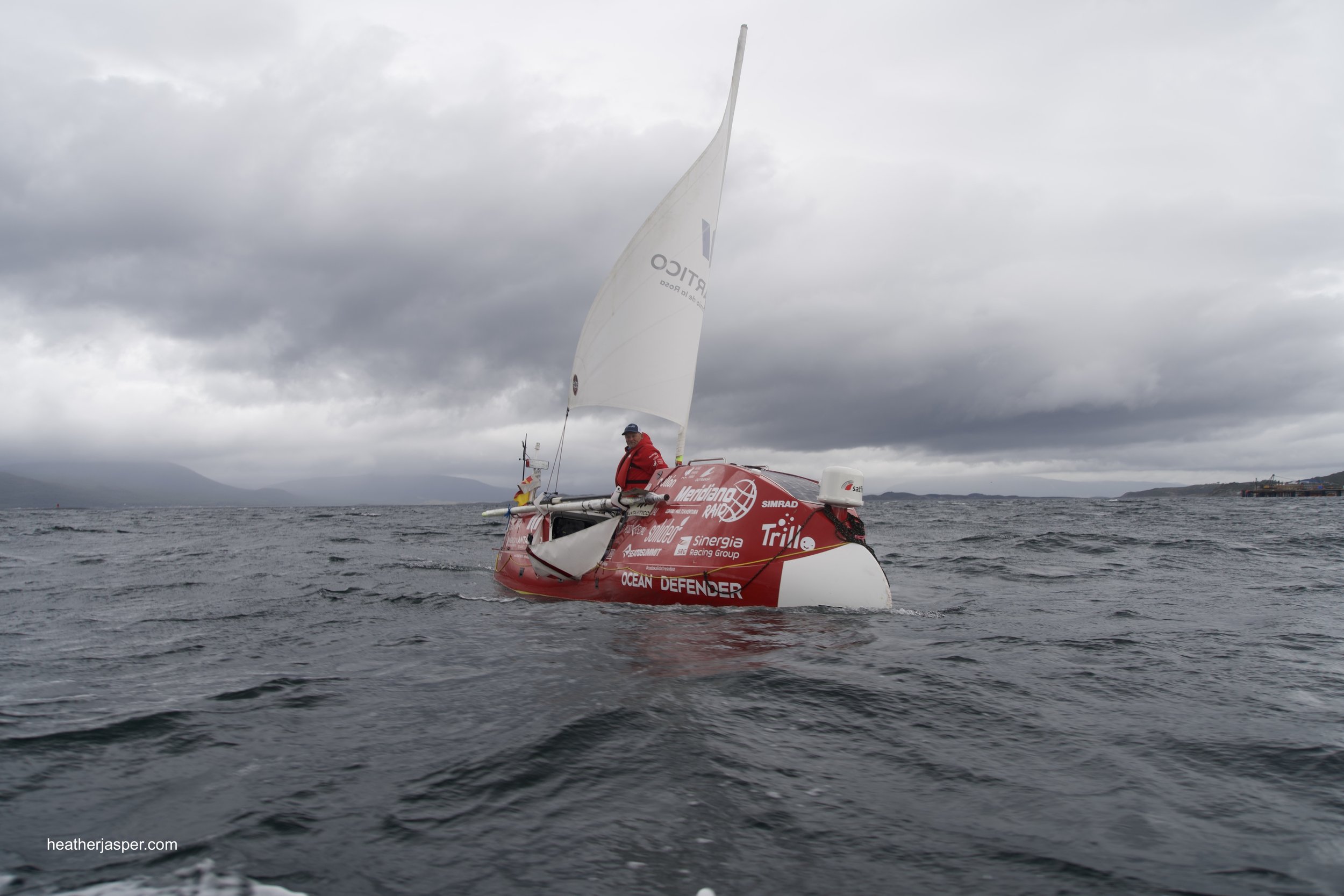
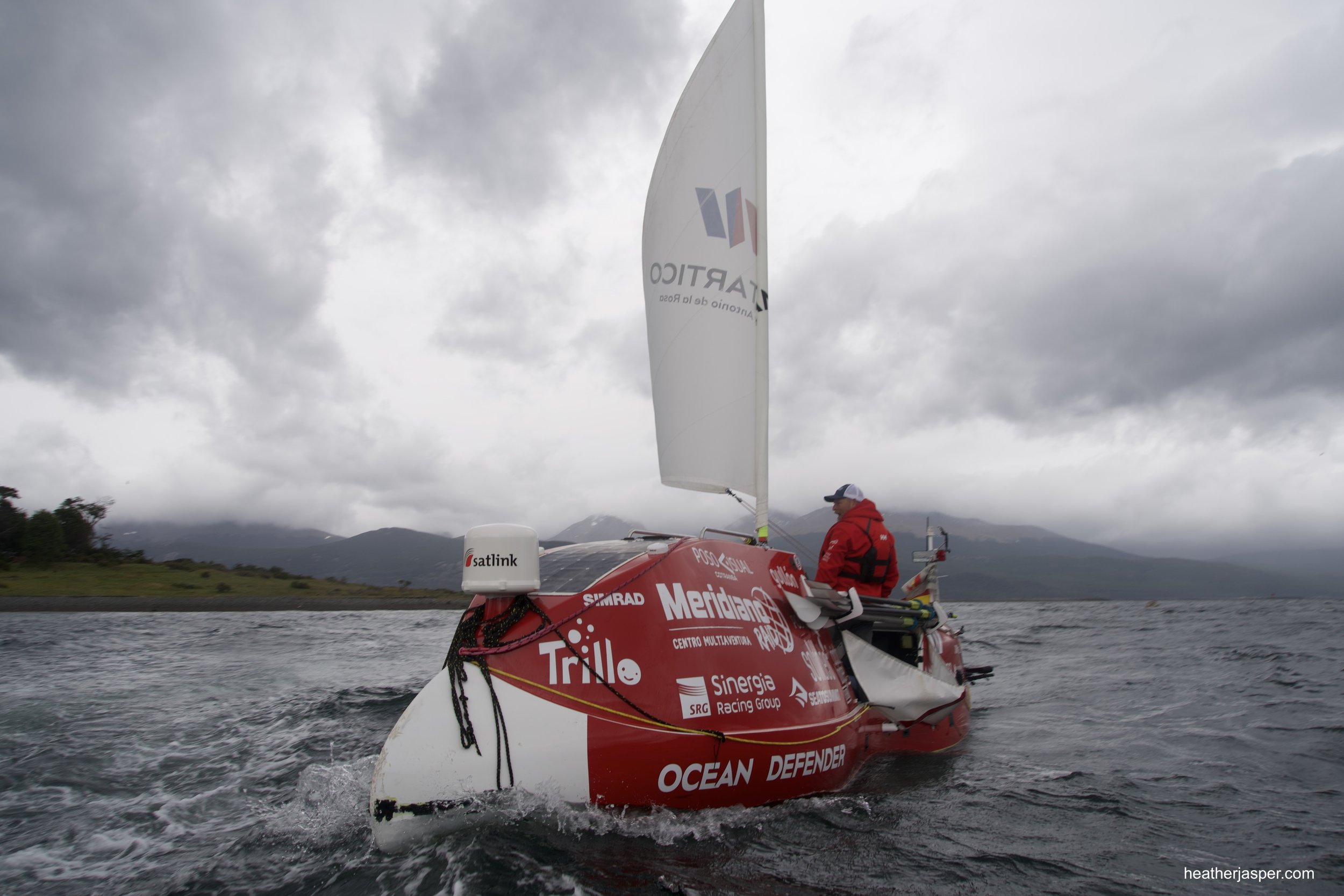

Antonio was happy to let me poke around his boat and squeeze myself into the small cabin. Except for the skylight, it felt a lot like a coffin. His air mattress was very comfortable, and I think I would have been happy on the little boat, though not in the violent seas he was headed to. I would have been comfortable staying in the Ocean Defender in the protected harbor of Puerto Williams. Instead, I was given a much bigger boat to stay on during my week there. I got to sleep in a sailboat moored to Micalvi, a sunken Chilean Navy ship that has been turned into a pier and yacht club.
New Year’s Eve 2023
Antonio got double dessert for New Year’s. Throughout the time I spent with him, he ate as if he wasn’t going to see real food again for a month or two. He had rations for 60 days with him on his rowboat, but would have no access to a kitchen or any fresh fruits or vegetables throughout the expedition.
Always smiling
Antonio was a lot of fun to be around, whether we were sharing beers or doing a photoshoot in the harbor. The week I spent with him and his team was so much more fun and excitement than I had anticipated when I flew to Puerto Williams!









